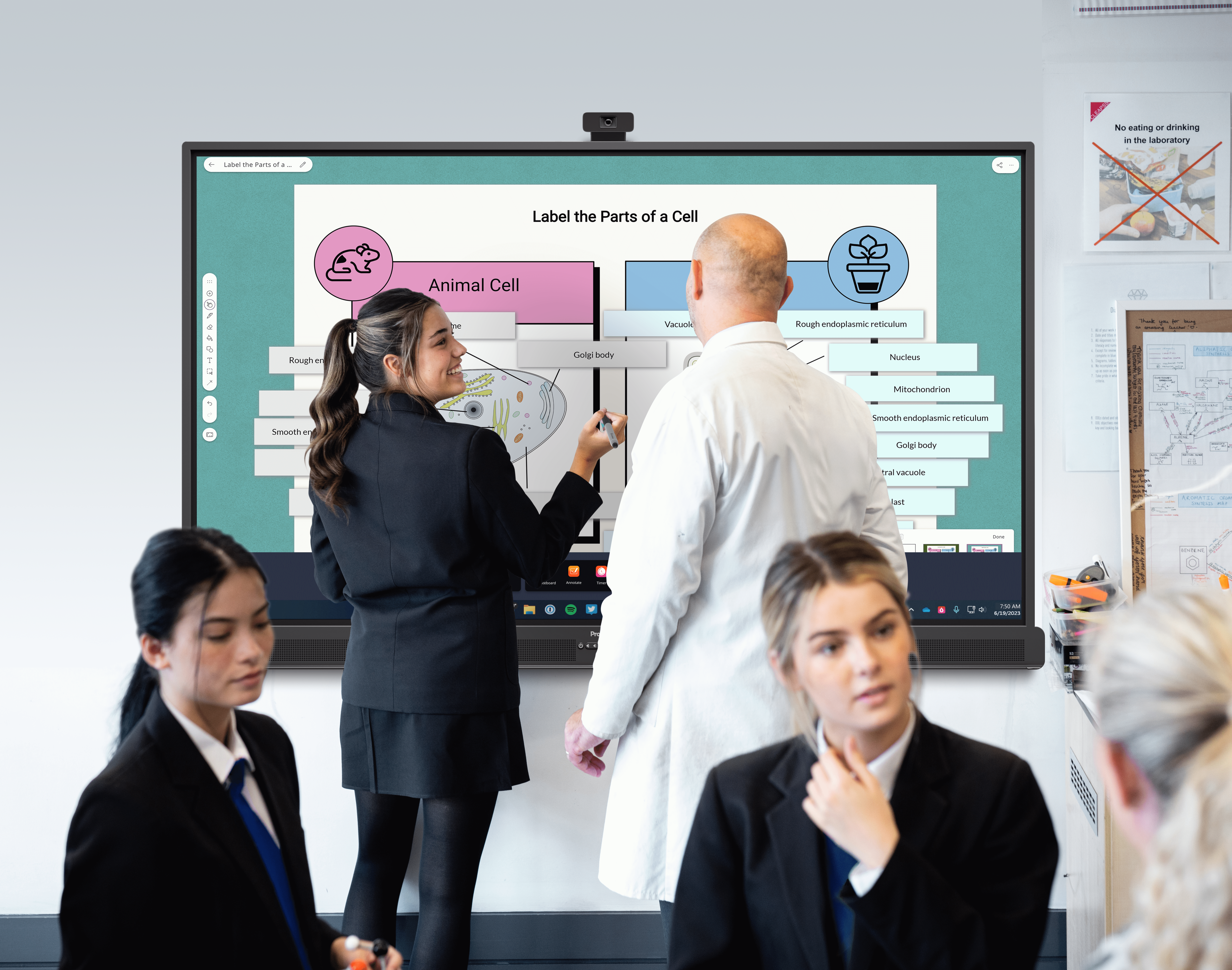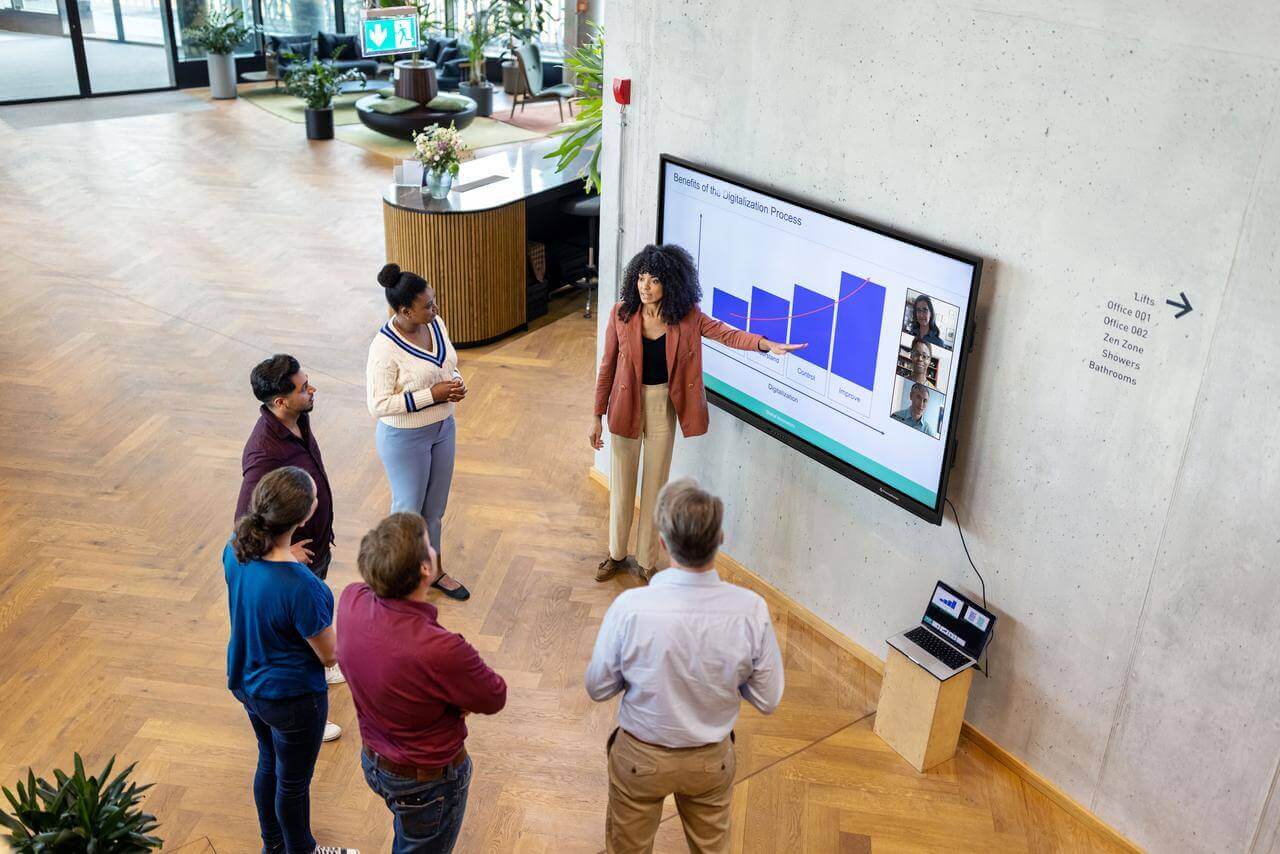Published on December 30th, 2024
Five Examples of Innovation in the Workplace – How a Progressive Approach Towards Ideas and Technology Can Benefit Your Business
15 minute read

Summary
An article advocating for the adoption of innovation in the workplace and espousing its benefits hardly seems groundbreaking in 2024, and one would hope that it would be somewhat redundant by this point. What is worth exploring, however, is the question of what types of workplace innovations drive success, what it is about them, and how they’re implemented that makes them successful so that you can harness that knowledge for your business.
What is Workplace Innovation?
Before we examine some of the characteristics of workplace innovation, it’s useful to understand precisely what we mean when we use the phrase. In his paper, Workplace Innovation for Better Jobs and Performance, Professor Frank Pot of Radboud University defines it as “the implementation of new and combined interventions in the fields of work organisation, human resource management and supportive technologies. Workplace innovation is considered to be complementary to technological innovation.” This last point is pertinent and something that we’ll look at in more detail later in this article.
Most of us can agree that the majority of business leaders want to encourage innovation within their workplace. In fact, a survey by McKinsey found that up to 90% of executives said that innovation was a top priority, but that same survey found that only 6% were satisfied with their innovation performance. Clearly there are substantial challenges to effectively and impactfully embedding innovation within our workplace cultures.
The Challenges and Benefits of Workplace Innovation
The challenges to adopting innovation at work are numerous, so you shouldn’t feel defeated if its implementation has not been successful in your workplace. Some of the most common challenges are financial restraints and an overstretched workforce. People need resources to innovate, and this includes both time and money – it’s very hard to be creative when you have more work than you have time to do, and this is when we fall into formulaic, routine processes.
Some of the challenges are less straightforward and require a more methodical, strategic resolution. Resistance to change, for example, is an embedded workplace behaviour that demands resource and strategic engagement to overcome at a macro level. Other common challenges are easier to prevail over. Increasing the diversity within your team will naturally lead to a wider range of ideas and perspectives, as will improving your workplace collaboration.
If you’re able to overcome these challenges, then there are many benefits to be found in a naturally innovative workforce. The business benefits are likely to be fairly evident – improved efficiency and a creative, problem-solving approach to challenges – but a culture of innovation can also have a huge individual benefit on your employees. It improves engagement and their sense of belonging and ownership but also cultivates leadership. In essence, it has a positive impact on both well-being and career development.
We’ve established that an innovative workplace is aspirational, with benefits abound, but we’ve acknowledged that there are many quite significant obstacles to actually becoming innovative. So, how do we remove those obstacles?
Dismantling Challenges to Innovation in the Workplace
Created in 2013 at the request of the European Commission, The European Workplace Innovation Network (EUWIN) was established to promote the concept of innovation in the workplace throughout Europe.
Part of their mission was to create a roadmap for the implementation of workplace innovation by businesses and networks. They called that roadmap the ‘Fifth Element’, a series of workplace practices, the implementation of which they believed would lead to (in their own words) “a sustainable culture of innovation and empowerment embedded throughout the organisation”.
The Fifth Element:
- Jobs Teams & Technology – Recommended practices include individual discretion and self-governance, team collaboration and reflection, job variety, and people-centred technologies.
- Employee-Driven Innovation & Improvement – Recommended practices include productive team reflection and cross-team improvement, and permission to experiment alongside company-wide innovation events.
- Organisational Structures, Management, and Procedures – Recommended practices include reduced hierarchies, coaching-style management, learning- and innovation-focused appraisals, simplified procedures, and strength-based career structures.
- Co-Created Leadership & Employee Voice – Recommended practices include visible leadership; openness, transparency, and emotional intelligence; representative participation; and delegated decision-making.
- The Fifth Element – An alignment of all of the above along with a culture of empowerment and innovation.
Implementation of the above, claim EUWIN, will lead to the successful adoption of innovative practices within the workplace.
You may or may not choose to implement EUWIN’s framework in your business, but what’s important to learn from the Fifth Element is that, before rolling out your workplace innovation plan, you must first acknowledge and accept the existing barriers in your workplace that are preventing innovation. Then, you can put together a strategy for overcoming those barriers. Without this in place, your workplace is unlikely to be able to adopt a culture of innovation.
Business Innovation Examples
In this section, we’ll take a look at some examples of innovation in the workplace from leading businesses and discuss in each case what it was that made those practices so successful. We’ll focus both on examples of innovative behaviours and examples of innovative technologies.
Remote Working
In a post-Covid world, remote working hardly seems like much of an innovation, but in 2009 it was almost unheard of. Step in Philips, who introduced ‘mobile working’ as a means to reduce their office space to combat under-utilisation. That may sound cynical, but the move proved a successful business decision, and the reason it was successful was that they recognised the need to change their business organisation, introduce better IT support, and move towards managing employees by output rather than presence. The lesson here lies in responsive business structures; this innovation was successful because the business recognised the need to evolve and change its structures or to adapt to the new ways of working.
Creativity and Intrapreneurship
Tech giants Google and Adobe both do this incredibly well. Google’s ‘20% Time’ rule is famous for encouraging the company’s employees to spend 20% of their time working on what they think will benefit Google. Meanwhile, Adobe’s ‘Kickbox’ programme goes one step further, giving every employee access to a $1,000 pre-paid credit card (no managerial approval required for spending) and an instructional guide for launching new ideas. Both companies have seen these programmes give rise to some of their biggest ventures. The reason these programmes have been so successful is because they demonstrate trust and belief in their employees, encouraging independent thought, a sense of ownership, and the opportunity to pursue personal projects – that, and the fact that they are underpinned by policy. A great idea is nothing without the legislation to validate it!
Innovative Technology Examples
Employing innovative behaviours within your business is very much akin to laying the foundation stone of a new building. It provides your colleagues with the support and confidence they need to be creative and progressive, but availing your business of innovative technologies can help provide the tools they need to bring those qualities to life. In this section, we’ll look at a few innovative technology examples and examine what makes them successful.
Using Technology to Support Wellbeing
According to recent research by Microsoft, almost half of employees and over half of managers reported feeling burned out at work. Recognising that its own tool – Microsoft Teams – was becoming an integral focus point of many workplaces, they introduced Viva. Viva helps Microsoft Teams users to track goals, set career development objectives, provide feedback to managers, and make connections in the workplace. It’s also complemented by Microsoft Praise, which allows users to formally praise colleagues and recognise their good work.
A Forrester report subsequently found that Viva helps to reduce employee attrition by 20%. These are convenient stats for a provider of one of the leading workplace software solutions, but it’s hard to deny the impact of a tool that helps us to recognise the meaning of our work and supports our sense of purpose in the workplace. What makes Viva such a successful example of innovation in the workplace is that Microsoft looked at what tools were most prolifically used and where employees were spending most of their time and proposed people-focussed solutions that offered seamless integration with those tools.
Hybrid Huddle Spaces
Hybrid huddle spaces or conferencing rooms are becoming an increasingly essential facility for office-based businesses. Usually consisting of an interactive display and audiovisual technology, they are a way for office- and remote-based workers to collaborate as if they were in the same room. Using videoconferencing technology, we can collaborate with our colleagues in real-time without missing out on visual cues or information conveyed by tone of voice. Moreover, interactive displays allow both home- and remote-based employees to share resources and collaborate on documents, annotating for interactive presentations in real-time or using mind mapping tools to contribute ideas to a shared document, all of which can be used alongside videoconferencing technology.
Hybrid huddle spaces are one of the best recent examples of innovation in the workplace, as they have become an essential component of everyday working life. The success of this innovation lies in two factors: the understanding of how people work and the need to feel physically close to each other to foster collaborations (otherwise known as the Allen Curve); and circumstance. It would be disingenuous to imply that the success of this innovation is not in part due to the circumstances forced on us by the pandemic and the catalyst effect this had on hybrid working. Sometimes the best workplace innovations are a result of necessity!
Generative AI
With the proliferation of free online tools, generative AI is unfortunately so often an example of unsuccessful innovation at work. There are myriad reasons for this, many of which are largely ethical, such as the displacement effect the technology may have on jobs or the sheer amount of carbon and water required to maintain the servers that support these technologies. However, much of the lack of success can be attributed to the premature adoption of a technology that is poorly regulated and does not always guarantee accurate or high-quality output.
Businesses that have successfully adopted the technology have done so with a strong awareness of its limitations, often recognising its use as an assistive tool but its requirement for human intervention. They also tend to use custom-built solutions for internal processes rather than buying an off-the-shelf tool for customer-facing applications. Morgan Stanley, for example, successfully uses generative AI to analyse its masses of financial data, summarising key trends and reducing the likelihood of mistakes.
In this example, we might say that successful innovation can sometimes require caution – or at least an awareness of your own business’ limitations and level of maturity for adopting new technologies.
Workplace Innovation – Solutions for Your Business
It is these approaches to innovation in the workplace that underpin the functionality that Promethean has endeavoured to integrate into our technologies.
Not only do our interactive displays allow you to bring your office- and remote-based employees together in a manner that offers seamless, real-time collaboration, but with our screens you get access to a number of Promethean apps.
You can bring your own taste of innovation and creativity to the way that you work by using the timer app to fuel fast-paced ideation sessions. Alternatively, you might use the Spinner app for team building, selecting areas of your business to propose progressive solutions for, or selecting team members to offer contributions.
Contact Promethean today to find out how our interactive displays and software solutions can help you introduce innovation at work in a sustainable manner that will empower your employees.
Related articles:




